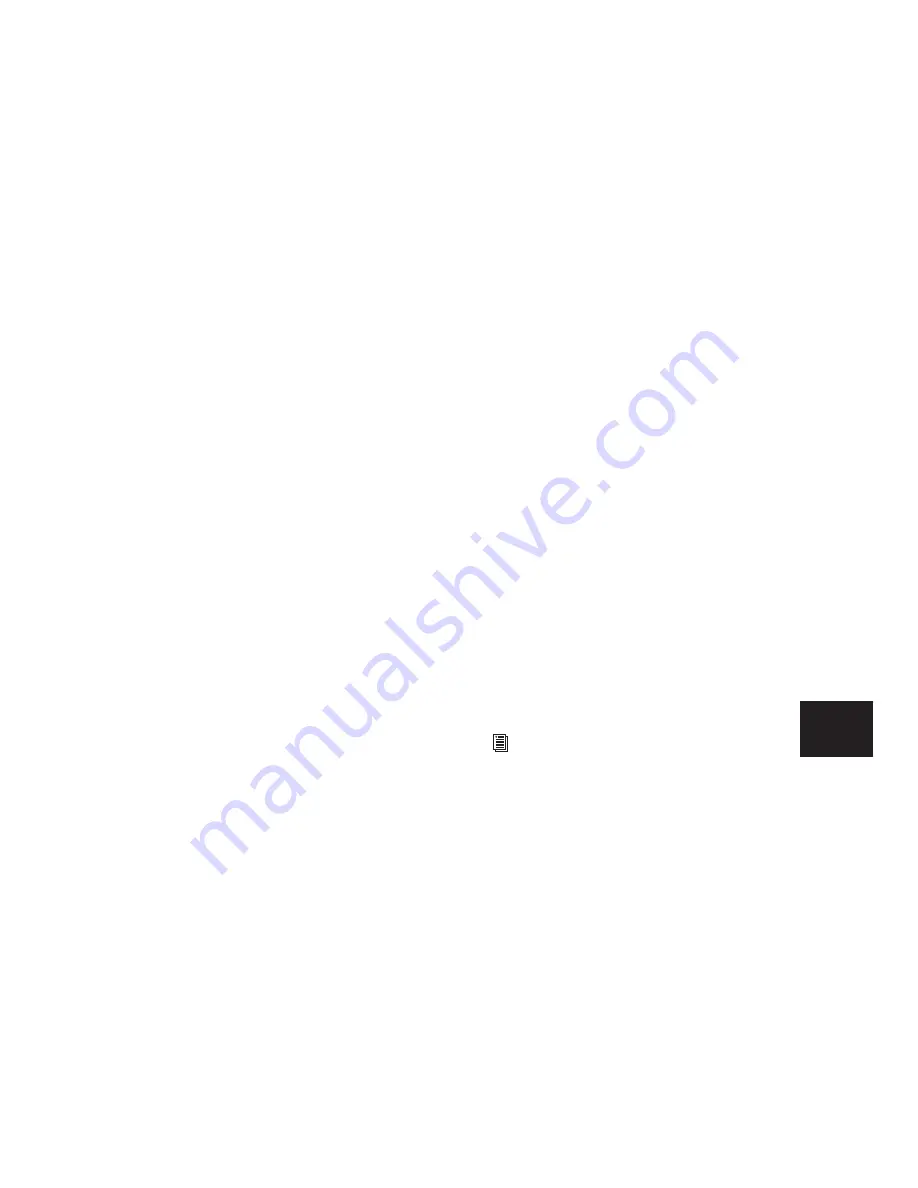
Chapter 31: Mixdown
743
Chapter 31: Mixdown
Pro Tools lets you
record
and
bounce
tracks to
disk. The Bounce to Disk command lets you
write a final mix to disk, create a new loop, print
effects, or consolidate any submix. You can also
submix, route, and record busses and inputs to
new audio tracks.
Bounce to Disk
This command writes the cur-
rent session (if no selection), Edit, or Timeline
selection as new audio files to disk. Any avail-
able output or bus path can be selected as the
bounce source. Use Bounce to Disk to write or
master any output or bus path directly to disk.
Sample rate, bit depth, and other conversion
processes can be applied during or after the
bounce. The Bounce to Disk command lets you
bounce all available voices to disk without hold-
ing any in reserve. Though you can hear the
bounce being created in real time, you cannot
adjust mixer or other controls during a Bounce
to Disk.
Recording to Tracks
This is the process of sub-
mixing and recording to new audio tracks, as
you would any input signals. This method re-
quires available tracks, voices, and bus paths to
accommodate the submix and the new tracks.
While recording to tracks, you can adjust mixer
or other controls.
Selecting Audio for Loops, Submixes,
and Effects
Both Bounce to Disk and recording to tracks op-
erate on the current Timeline or Edit selection, if
any. This makes it easy to turn multitrack selec-
tions into mono, stereo, or multichannel loops.
Submixes, stems, and other specialized types of
mixes can also be printed to disk using either
method, or recorded out to a DAT, MDM, or
other recording, transfer, or archiving medium.
Printing effects to disk is the technique of per-
manently adding real-time effects, such as EQ or
reverb, to an audio track by bussing and record-
ing it to new tracks with the effects added. The
original audio is preserved, so you can return to
the source track at any time. This can be useful
when you have a limited number of tracks or ef-
fects devices.
Use Bounce to Disk if you need to convert the
bounce files, or if you do not want or need to in-
teract with mixer controls during the bounce.
Record to new tracks if you want to adjust con-
trols while the files are being written.
AudioSuite plug-ins provide another option
for printing a plug-in effect to disk. See the
DigiRack Plug-ins Guide for details.
Содержание Pro Tools
Страница 1: ...Pro Tools Reference Guide Version 7 3 ...
Страница 15: ...1 Part I Introduction ...
Страница 16: ...2 ...
Страница 33: ...19 Part II System Configuration ...
Страница 34: ...20 ...
Страница 44: ...Pro Tools Reference Guide 30 ...
Страница 94: ...Pro Tools Reference Guide 80 ...
Страница 95: ...81 Part III Sessions Tracks ...
Страница 96: ...82 ...
Страница 108: ...Pro Tools Reference Guide 94 ...
Страница 130: ...Pro Tools Reference Guide 116 ...
Страница 269: ...255 Part IV Recording ...
Страница 270: ...256 ...
Страница 310: ...Pro Tools Reference Guide 296 ...
Страница 345: ...331 Part V Editing ...
Страница 346: ...332 ...
Страница 402: ...Pro Tools Reference Guide 388 ...
Страница 496: ...Pro Tools Reference Guide 482 ...
Страница 548: ...Pro Tools Reference Guide 534 ...
Страница 571: ...557 Part VI MIDI Editing ...
Страница 572: ...558 ...
Страница 596: ...Pro Tools Reference Guide 582 ...
Страница 637: ...623 Part VII Mixing ...
Страница 638: ...624 ...
Страница 702: ...Pro Tools Reference Guide 688 ...
Страница 771: ...757 Part VIII Video Sync Surround ...
Страница 772: ...758 ...
Страница 792: ...Pro Tools Reference Guide 778 ...
Страница 806: ...Pro Tools Reference Guide 792 ...
Страница 856: ...Pro Tools Reference Guide 842 ...






























